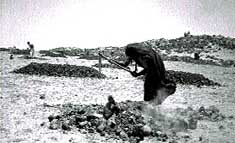Turning out new leaves
 datia, located 170 km from Agra, was a region flourishing by the middle of the 20th century. With a pastoral economy, it was generously endowed with lush vegetation and forest cover. The latter housed a rich plethora of wildlife. But less then five decades into post-independent India, the situation drastically changed. The area no longer had forest cover or wildlife. In its place lay barren land and rocky hilltops.
datia, located 170 km from Agra, was a region flourishing by the middle of the 20th century. With a pastoral economy, it was generously endowed with lush vegetation and forest cover. The latter housed a rich plethora of wildlife. But less then five decades into post-independent India, the situation drastically changed. The area no longer had forest cover or wildlife. In its place lay barren land and rocky hilltops.
In 1987, a Delhi-based non-governmental organisation, Development Alternatives, arrived on the scene. A team led by S Sahani, sought to refoliate the area and the technique adopted was one of natural regeneration. It was based on the simple premise that most of the land still contained the rootstock. All that was done was to ensure that rainwater was captured in situ . And what resulted in the years that followed, was sheer wonder: a forest was brought back to life.
Roots of Datia relates the story of the rebirth of Datia's forests. It effectively captures the transition in Datia. The narration is distinctive and the interviews with the then district collector, Rinoo Joshi, and some of the local residents, striking.
The primary cause of the destruction in Datia is the urban exploitation of the forests and the subsequent breakdown of the links of the natives with the forests after they were transferred to the forest department.
The film also compares the success at Datia with other forest conservation and regeneration experiments like those in Bankura district in West Bengal. Here, the film rises from being a mere documentary for it goes on to point out that the only flaw in the experiment is that the people's participation has been overlooked. If new forests have to be created, this aspect can no longer be set aside.
On the whole, the film is informative and advocates further use of the same technique throughout the country. The technique, besides being fairly inexpensive, also provides for the revitalisation of indigenous varieties. However, the background music of the film could have fared better as in patches it is too distracting. Also, the film could have been shorter and more focussed. It tends to give the impression that the it has been made with a more Western audience in mind.
Related Content
- Ebb and flow, Volume 1: water, migration, and development
- Water for India: sustainable alternatives
- Transforming food and agriculture to achieve the SDGs
- Electricity distribution companies in India: preparing for an uncertain future
- Turning promises into action: Gender equality in the 2030 Agenda for sustainable development
- This Bengaluru craftsman turns trash into treasure
